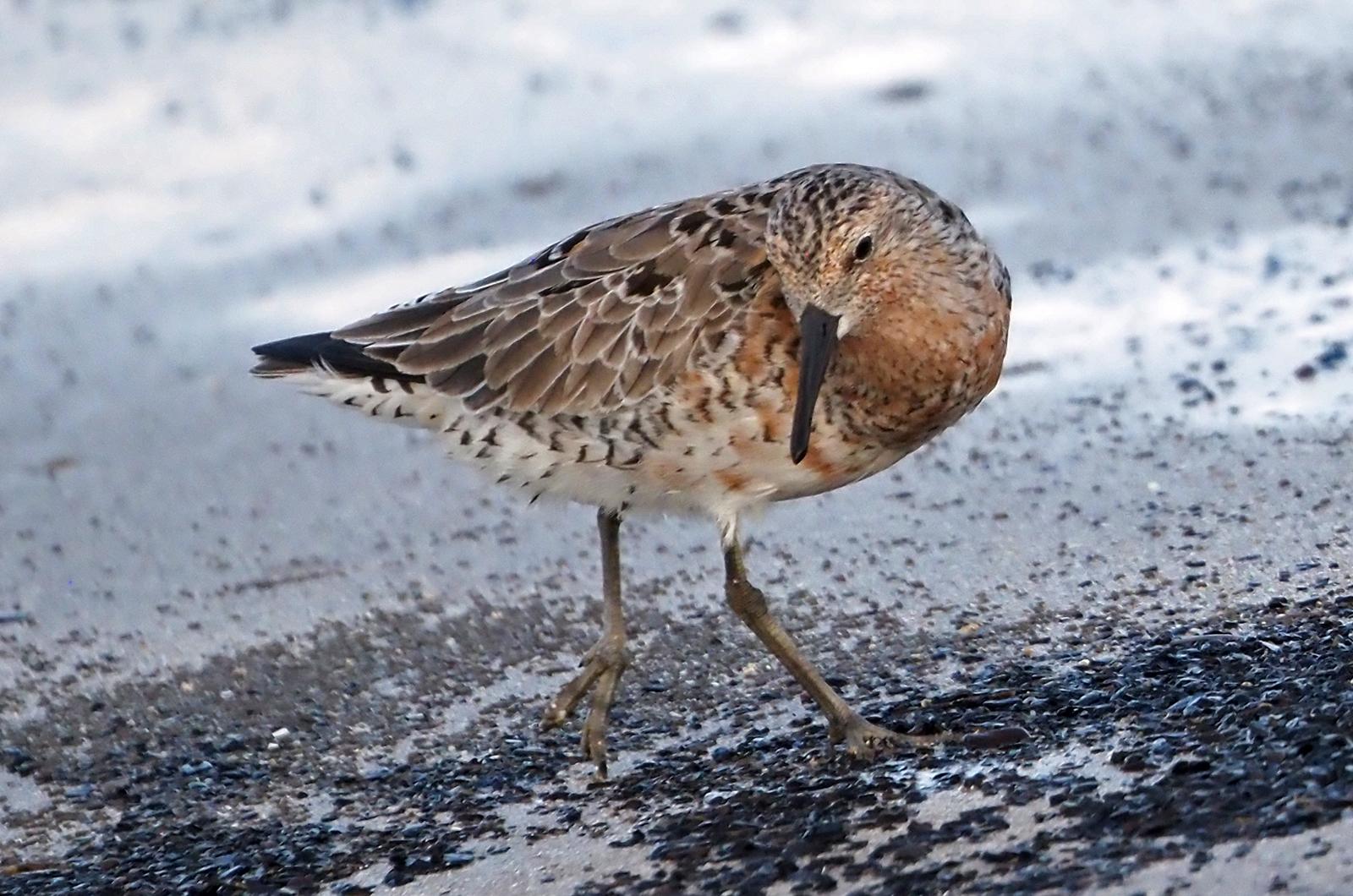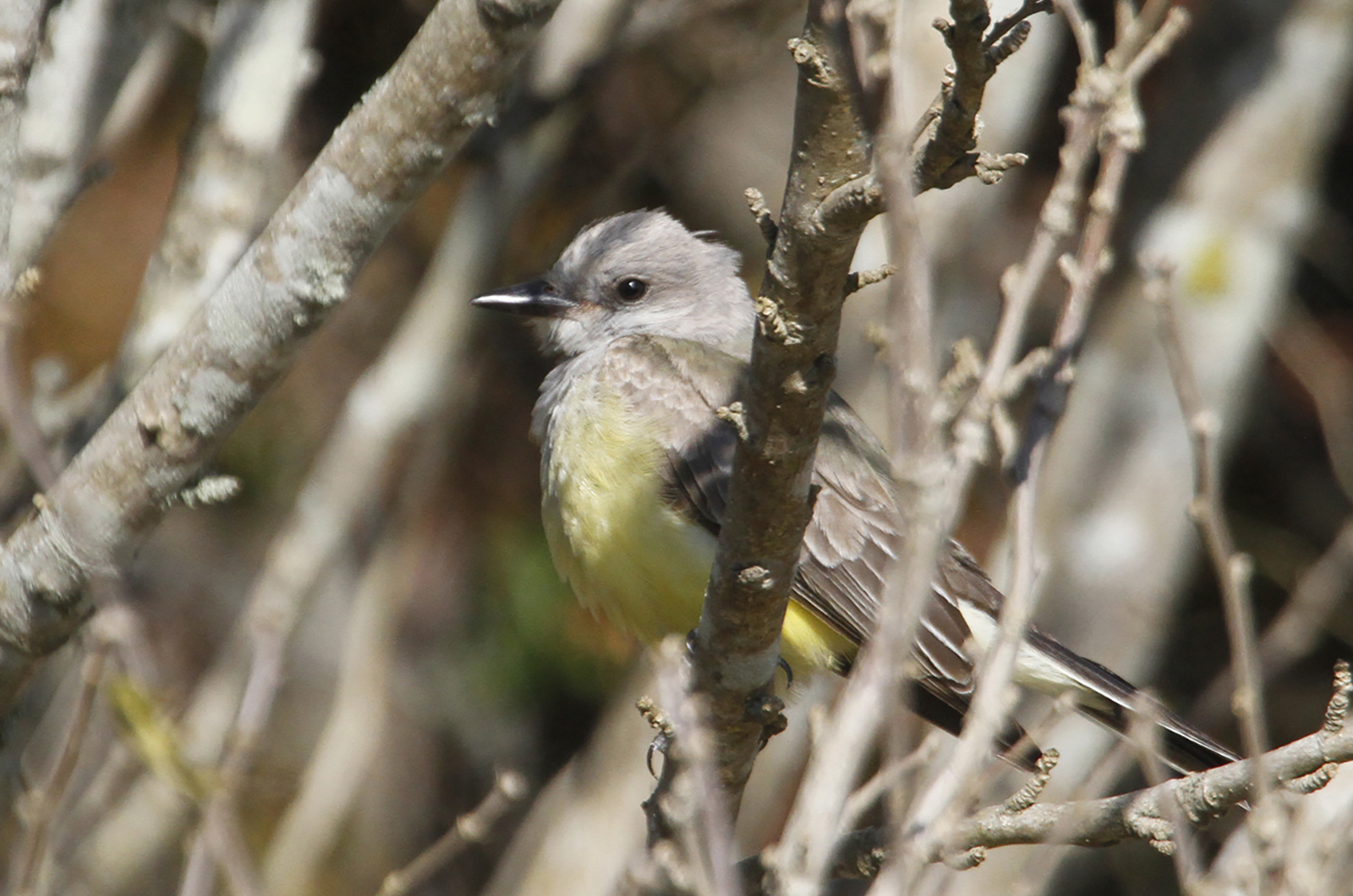While the northward migration has not ended, and several new species for the year are detailed in this column, the nesting season is reaching its peak. Almost all of the birds that are here have started nesting.
How can we tell that birds are nesting? Finding active nests or recently-fledged youngsters are two ways, but not the only ones.
Bird song is about defending territory from others of their species to protect food supplies for their nestlings and fledglings. Carrying vegetation also confirms breeding since the only reason to do that is to build a nest. Another way to confirm nesting is to see birds carrying food rather than immediately eating it; they bring this food to their nestlings. The last way is to see the young birds after they have left the nest and are full-grown but not necessarily fully feathered. These fledglings may not be seen with their parents but that does not mean the parents have abandoned them. So please leave these fledglings alone!
Finding nests are by far the most interesting way to confirm nesting, so they are also the most frequently reported. Every year Jerry Twomey has screech owls nesting in a nest box. He has seen the adults coming and going from the box and on May 27 he observed young screech owls crowding around the entrance and peeking out into the big bright world. Whitney Moody reports the same from her West Tisbury yard. On May 20 Sioux Eagle discovered a pair of great-crested flycatchers nesting in her screech owl box in her West Tisbury yard.
Nest boxes are not essential for finding nests. Amanda Dickinson found a yellow warbler nesting in a shrub in her yard on May 20. Walter Ricciardi discovered an amazing sock-like hanging nest of a Baltimore oriole in Aquinnah on May 22.
Cynthia Bloomquist and Thaw Malin report that they found an occupied house finch nest in their West Tisbury yard on May 22. Also on that day, Laura Lennihan found both a female yellow warbler sitting on a nest at the Oak Bluffs pumping station and a Baltimore oriole nest at Sheriff’s Meadow Sanctuary. As of May 27 Dahlia Rudavsky and Bob Jampol are watching a phoebe nesting on their Ocean Heights porch.
And most exciting to me is the finding of a second pair of nesting common ravens near the Triangle in Edgartown, first reported by Kenneth LaVigne on May 20. Steve Voorhees found at least two chicks in the nest on May 27.
Observing courtship behavior is another indicator of nesting. On May 15 Sarah Mayhew found Baltimore orioles mating at Blackwater Pond Reservation and on May 18 she saw black skimmers courting on Little Beach. The same day Ned Casey also observed the skimmer courtship and mating.
Less frequently reported are the two more indirect confirmations of nesting activity — carrying vegetation or food — even though these behaviors are easier to observe. You do not even need to see the birds taking the vegetation to the nest: there is no other reason for a bird to be doing this. On May 17 Ned Casey observed a catbird carrying vegetation. And on May 16 Holly Mercier watched a grackle carrying food.
Finding fledglings — baby birds — confirms that the species has made it past the nesting phase and the eggs have hatched. On May 15 Kirsten Olsen spotted a mute swan with two cygnets at Felix Neck.
Also at Felix Neck, Steven Seltman found a family of Canada geese with goslings on May 19. On May 16 Lisa Maxfield found three broods of Canada geese with 20 goslings at Brush Pond.
Jeff Bernier observed a female mallard and her brood of ducklings at Butler’s Mudhole, part of the Sheriff’s Meadow Sanctuary in Edgartown on May 18. And, finally, Ira Certner found a family of American oystercatchers with three small chicks on the barrier beach at Tisbury Great Pond on May 26.
But migration continues. The most exciting migrant is from Olsen Houghton’s family, who found and photographed a western kingbird perched on fencing at Katama Farm on May 27. This is only the second spring report for this species; Matt Pelikan and Lanny McDowell spotted one on June 4, 2010 in downtown West Tisbury. This western stray is more likely to be observed during the southward migration.
A red-necked phalarope is not seen frequently from the Island, although they can be found out in the open ocean during the northbound and southbound migrations. David Benvent and Samuel Scarfone found and photographed a male red-necked phalarope close to the shore at Lobsterville Beach on May 25.
Three shorebirds are new for the year. There were four sightings of red knots this week, all on the Norton Point tidal flats. David Benvent found the first one on May 22, and he spotted five of them on May 26. In between those sightings, Sam Wainwright saw three on May 24 and Susan Whiting and Bob Shriber found six on May 29, along with one white-rumped sandpiper. Five spotted sandpipers were spotted along the shores of Edgartown Great Pond on May 26 by Jeff Bernier.
On the songbird front, two grasshopper sparrows were observed by Jeff Bernier, Lanny McDowell, Lisa Maxfield and Nancy Nordin at Katama Farm on May 28. This species is normally quite elusive as it runs around on the ground hidden by the grasses. But these birds cooperated by perching on a fence above the grasses. And the first blue-headed vireo was spotted by Paige Wasson and James Coombs on May 22 at Cedar Tree Neck.
Please email your sightings to birds@vineyardgazette.com.
Robert Culbert is an ecological consultant with Nature Watch LLC, living in Vineyard Haven.









Comments (1)
Comments
Comment policy »